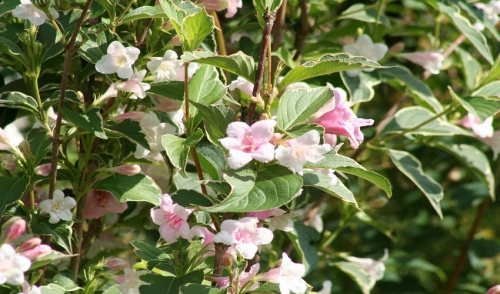
Rules of Thumb for Pruning Flowering Shrubs
Pruning can be very beneficial – even essential – for flowering shrubs, but it can be intimidating to pick up a pair of shears and attack your favorite blooming bush. If you understand the general rules of thumb for pruning flowering shrubs, you can keep your shrubs even more beautiful.
Why Prune?
While many flowering trees, shrubs and bushes will do quite well without any dedicated pruning, in many yards they do not have the space to reach their full potential and pruning is necessary. Proper pruning can help shrubs in several ways, including…
- Encouraging larger blooms or more frequent blooming
- Healthier growth and minimizing diseases or pests
- Keeping size compact to fit the landscape
- Adjusting shape to a pleasing form
Regardless of why you prune your flowering shrubs, knowing how to do so correctly can be a great help to keep your plants in fantastic condition.
When to Prune
Different flowering shrubs should be pruned at different times. While each shrub variety will have its own individual needs, the general rules of thumb for when to prune are…
- If the shrubs bloom in the summer or fall, prune them in late winter or early spring.
- If the shrubs bloom in spring, prune them after their blooms wither and die.
- If shrubs need very heavy, regenerative pruning, prune them in later winter or early spring.
- If the shrubs are damaged, diseased or have dead branches, prune them anytime.
If the pruning needs to be severe, some blooming may be missed in the next season, but it will be well worth it to revitalize the plant and help it bring new blooms to life.
How to Prune Flowering Shrubs
There are several ways to prune shrubs and bushes, depending on what type of pruning you need to do and what outcome you want to achieve. The general rules of thumb for how to prune are…
- Pinch back small bits of vegetation from branch tips if you want to make the bush fuller and encourage greater growth while keeping the same general shape.
- Head back branches by removing up to one-third the length, trimming back to a strong bud or lateral branch if you need more aggressive pruning for healthier plants.
- Thin the plant by removing weaker branches all the way back to the trunk or a strong main branch if you want to encourage air circulation for a healthier shrub.
Depending on the type of shrub and the pruning care it requires, you may need to use several pruning methods to keep it in the best condition.
More Pruning Tips
No matter when you prune or how you go about, some basic rules of thumb apply to all pruning, including…
- Before you start pruning, properly identify the shrub and take time to research its exact needs for pruning care.
- Use the proper pruning shears or cutting tools, and keep them well-sharpened to avoid damaging or stressing the plant.
- If you are pruning diseased or pest-infested branches, rinse your tools in a weak bleach solution between cuts to avoid spreading problems to other parts of the plant.
- Follow the "less is more" credo and prune as little as possible. It is easy to trim a bit more off the plant if necessary, but it's hard to reattach branches you accidentally remove!
Pruning your flowering shrubs doesn't need to be a nerve-wracking experience, and if you understand the basic rules of thumb for proper pruning, you can keep your plants always looking their best.
